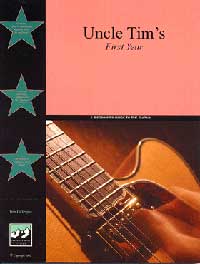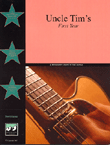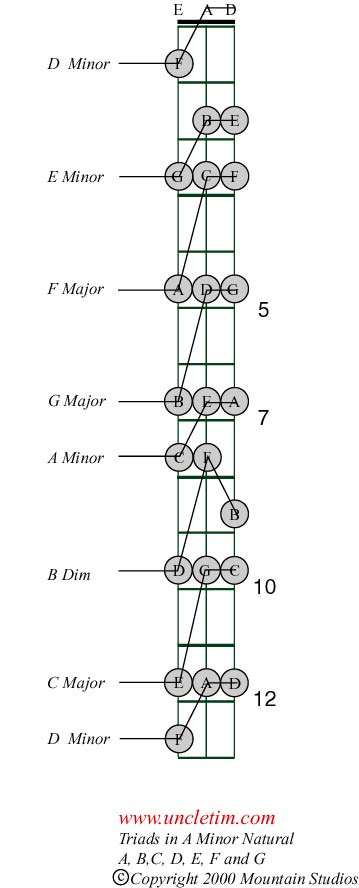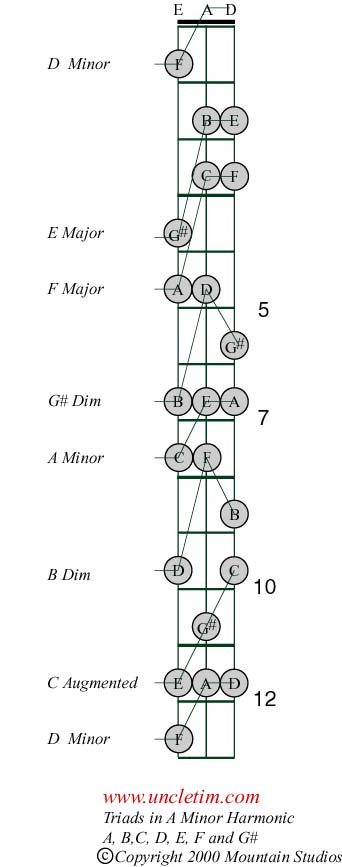

If You Are Going To Play In A Key Every Day, Shouldn't You Learn That Way?
Yes, you should!
Music is key based. You are always in one key or another. Always!
Yet playing a guitar is not taught that way! Why?
Once you understand keys and the chords and scales that come from keys, the whole world of music opens up before your eyes!
Suddenly everything is MUCH easier. And it totally makes sense when you get into it.
For $15, you can put this all to rest right now. Pick up a copy today.
eBooks are delivered instantly!
 Question: G'day
all, Using chord charts from the Web, I've been playing House of the Rising
Sun with the progression Am, C, Dm, F, Em. I assumed this was in the key
of C and is sounded fine. The other night I got into an argument with
a (much) more experienced player than myself (which does not really say
much) who said that the chord progression should be Am, C, D, F, E. This
just doesn't sound right to me. When playing the D (which has an F#) followed
by F (which has F) it sounds really strange. More so if picking than strumming.
I'm not really interested in who is right and who is wrong, I just want
someone to explain to me if it would be "right" to have a D chord followed
by an F chord. I'm probably not explaining myself very well, but here
is hoping someone can help supplement my obviously poor understanding
of keys.
Question: G'day
all, Using chord charts from the Web, I've been playing House of the Rising
Sun with the progression Am, C, Dm, F, Em. I assumed this was in the key
of C and is sounded fine. The other night I got into an argument with
a (much) more experienced player than myself (which does not really say
much) who said that the chord progression should be Am, C, D, F, E. This
just doesn't sound right to me. When playing the D (which has an F#) followed
by F (which has F) it sounds really strange. More so if picking than strumming.
I'm not really interested in who is right and who is wrong, I just want
someone to explain to me if it would be "right" to have a D chord followed
by an F chord. I'm probably not explaining myself very well, but here
is hoping someone can help supplement my obviously poor understanding
of keys.
Here is the graphic, I said I would post for the Deja.com, alt.guitar.beginner forum. Thist should help clarify what we are talking about.
Here is an older but related question posed on the forum.
Question: Sorry if this has been discussed in the NG before, but i am lost. i understand how the root note of the these chord prgressions are found. there are the 1st 4th and 5th note of a scale. so for the C major scale the I chord would have a root of C, the IV chord would have a root of F and the V chord would have a root of G. i dont understand how the rest of the IV and V chords are made. the I chord would be a C major. but what about the IV and the V chords? can i just play them as a regular F and G? i have seen that they are not played like this, the IV chord is the C major shape but the root C is not played, instead you fret the 4th string at the third fret. the V chord is the c major shape but the whole shape is moved down one string. so my question is how do you know what notes to play except the root note. sorry if this is confusing but i cant describe something that i do not understand better. thank you for you help
1. Look at the root notes. These are the first note in each chord. The chords are C major, D minor, E minor, F major, G major, A minor and B diminished. You build each chord by stacking the first (root) note, the third note (or degree) and the fifth note. The gray notes are in the chords, the white notes are notes in the scale but not in the chord.
2. Leave out the second and fourth degrees (white notes).
3. Notice the chord is either major, minor or diminished. The third degree determines if a chord is major or minor. The distance away from the root is the reason. Three frets and it is a minor third, four frets and it is a major third. A minor third (between the first and thrid degree) with a major third (between the thrid and fifth degree) is a minor chord. A major third (between the first and third degree) on top of a minor third (between the third and fifth degree) is a major chord.
4. Notice all the fifth degrees (except one) land on the same fret. These are perfect fifths. Notice the B chord has a minor third between the B and the D and a minor third between the D note and the F note. Two minor thirds stacked on top of each other is a diminished triad or chord. There is an imperfect fifth in the diminished chord.
5. These are also the same chords for A minor Natural.
.
TRIADS IN A MINOR AND A MINOR HARMONIC.
Here are two diagrams of triads (chords) cascading down the fretboard. The first example is A Minor Natural. The second one is A minor harmonic.
A minor has the following notes: A, B, C,D, E, F and G. Use these notes to construct the chords in the key of A minor Natural.
A minor Harmonic has the following notes: A, B, C,D, E, F and G#. Use these notes to construct the chords in the key of A minor Harmonic.
You can see the G# note changes three chords, the ones G# is in.
A minor is the exact same as C major. The only difference is you start on A minor. The harmonic and melodic version of A minor is where the key becomes diffrent than the relative major. By the way if you look at these diagrams, you should be able to see the whole steps and half steps between the notes as required by the formula.
Which one is correct for the song? The one the artist used in the first place. Listen to the subtle differences and compare them to the record or CD. I hope this helps.

